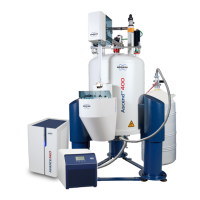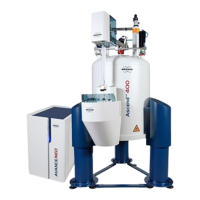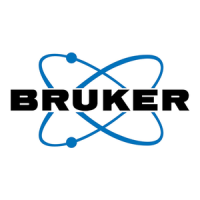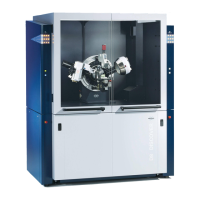Introductory Theory and Terminology
20 / 86 H171804E_14_001
Figure3.13: Decoupling Experiment
Figure3.14: Ethylbenzene Spectrum with Homodecoupling
The experiment described above is an example of homodecoupling in that the same isotope,
namely
1
H, is observed and decoupled. Heterodecoupling is where the isotope to be
observed is different to that which is decoupled. In the chapter ¹³C Spectrum with Proton
Decoupling [}67] of this manual you will perform a heterodecoupling experiment where you
observe
13
C and decouple
1
H. AVANCE spectrometers have the ability to perform very
complicated types of experiments depending upon the number of channels installed. A four
channel spectrometer can be used to observe one nucleus and decouple three other nuclei.
With up to eight independent channels the possible range of experiments is quite amazing.
The user should be aware that currently the limiting factor is not in the generation of RF
excitation and decoupling pulses but in transmitting these pulses to the sample via the probes
and to some extent the preamplifiers. The signal routing of the experiment to be carried out is
set up using the "edasp“ menu. More details can be found in the manual “Acquisition
Commands and Parameters” (P/N H9775SA3).

